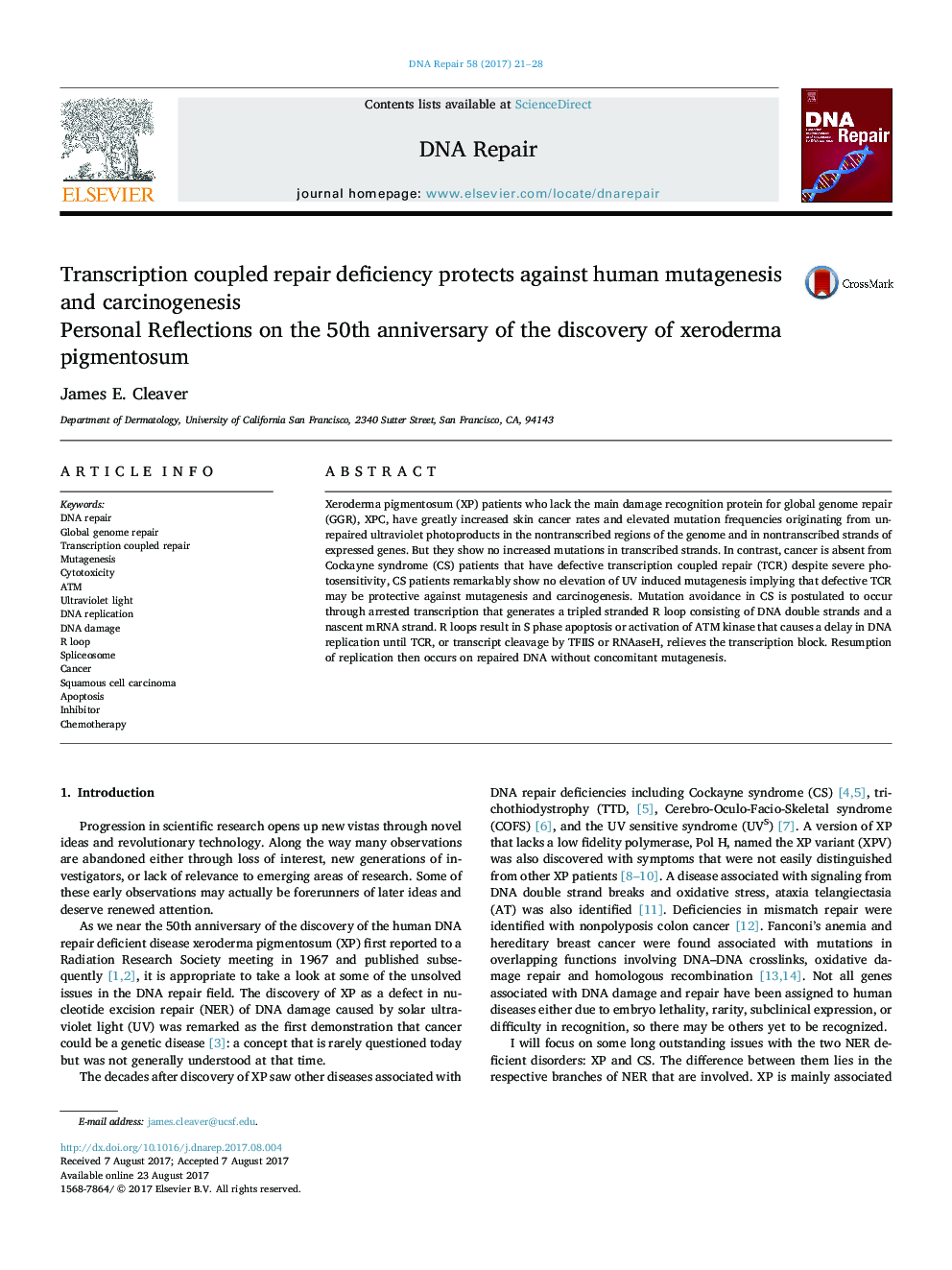| کد مقاله | کد نشریه | سال انتشار | مقاله انگلیسی | نسخه تمام متن |
|---|---|---|---|---|
| 5510957 | 1539370 | 2017 | 8 صفحه PDF | دانلود رایگان |
Xeroderma pigmentosum (XP) patients who lack the main damage recognition protein for global genome repair (GGR), XPC, have greatly increased skin cancer rates and elevated mutation frequencies originating from unrepaired ultraviolet photoproducts in the nontranscribed regions of the genome and in nontranscribed strands of expressed genes. But they show no increased mutations in transcribed strands. In contrast, cancer is absent from Cockayne syndrome (CS) patients that have defective transcription coupled repair (TCR) despite severe photosensitivity, CS patients remarkably show no elevation of UV induced mutagenesis implying that defective TCR may be protective against mutagenesis and carcinogenesis. Mutation avoidance in CS is postulated to occur through arrested transcription that generates a tripled stranded R loop consisting of DNA double strands and a nascent mRNA strand. R loops result in S phase apoptosis or activation of ATM kinase that causes a delay in DNA replication until TCR, or transcript cleavage by TFIIS or RNAaseH, relieves the transcription block. Resumption of replication then occurs on repaired DNA without concomitant mutagenesis.
Journal: DNA Repair - Volume 58, October 2017, Pages 21-28
